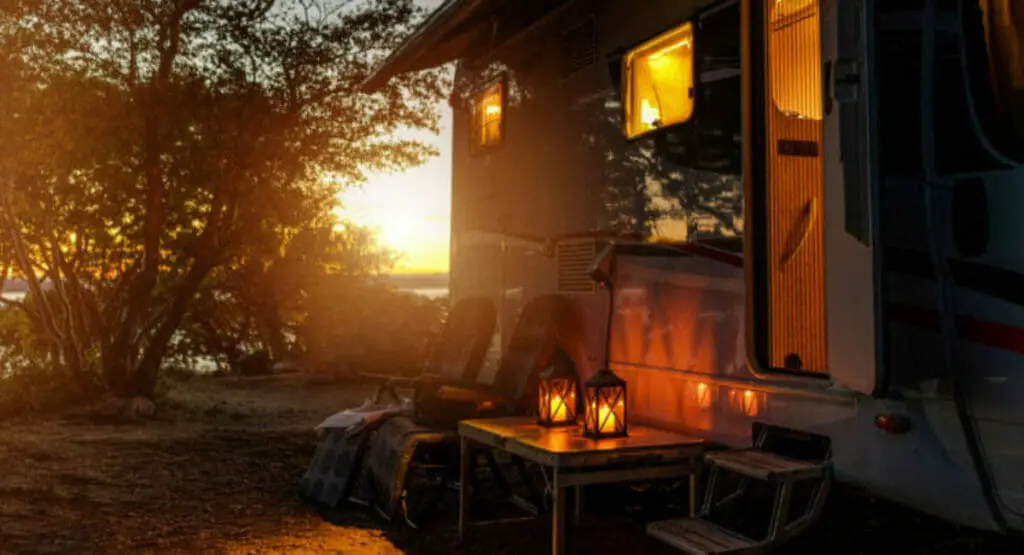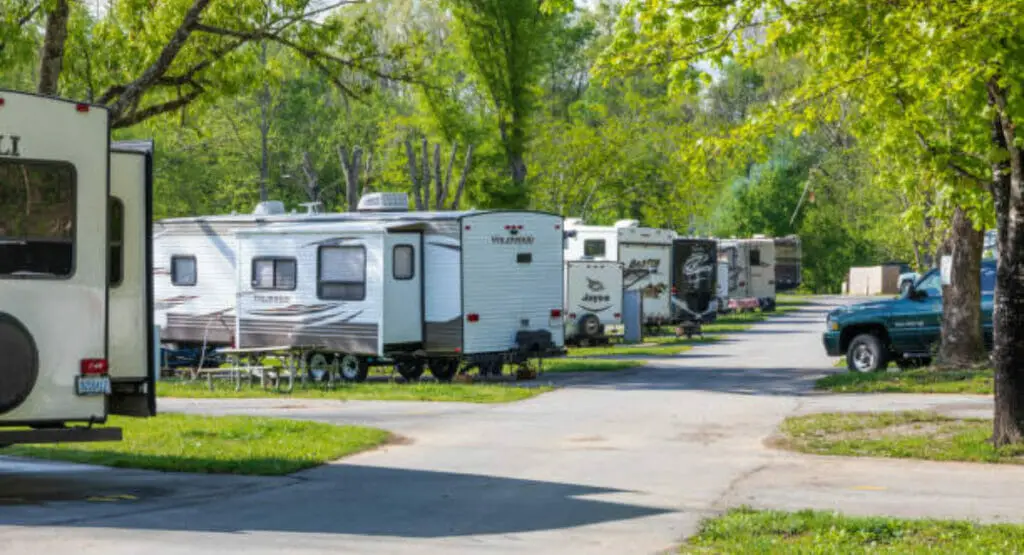The RV converter is an important component of an RV’s electrical system, providing the necessary power to operate various appliances and systems. The RV converter typically relies on a battery to provide the necessary electricity. However, there are times when you may wonder if an RV converter can be used without a battery. This article will go over the subject in depth, discussing alternative power sources and examining the viability of using an RV converter without a battery. Whether you’re a seasoned RVer or a curious enthusiast, keep reading to learn about the possibilities and considerations involved in running an RV converter without a battery.
I. Understanding the RV Converter and Battery Relationship:
To comprehend the potential operation of an RV converter without a battery, it is critical to understand the converter’s interdependence within the RV’s electrical system. An RV converter performs two primary functions: it converts alternating current (AC) power from an external source, such as shore power or a generator, to direct current (DC) power while also charging the RV’s battery.
The converter provides a consistent and regulated supply of DC power, which is necessary for running various appliances and charging the battery. The battery, in turn, serves as a power reservoir, storing energy from the converter and providing a stable power source when external power is unavailable. The symbiotic relationship between the converter and the battery enables consistent and dependable electrical operation in an RV.
When external power is unavailable or insufficient, the converter typically draws power from the battery. It also monitors the charge level of the battery, adjusting the charging process to avoid overcharging or undercharging. However, there may be circumstances in which you should consider running the RV converter without a battery, which we will discuss in the following sections.
II. Can an RV Converter Work Without a Battery?
While the primary function of the RV converter is to charge and use the RV battery, there are times when you may want to use the converter without a battery. Here are a few scenarios in which an RV converter can be used without a battery, along with step-by-step instructions:
A. Using Shore Power:
- Check to see if your RV has a shore power connection.
- Place your RV in an area with access to a shore power outlet.
- Connect the shore power cord from the RV to the outlet.
- Locate the converter unit inside the RV, which is usually located near the electrical panel.
- To disconnect the battery from the system, turn off the RV battery disconnect switch.
- Turn on the converter, which will now draw power directly from the shore power supply.
- The converter will convert the alternating current (AC) power from the shore power to direct current (DC) power and distribute it throughout the RV, powering appliances and charging any connected devices.
B. Connecting to an External Power Source:
- If you don’t have access to shore power but have a backup power source, such as a generator, make sure it’s compatible with your RV’s electrical system.
- Start the generator and connect it to the RV’s power inlet with a suitable generator cord.
- Locate the converter unit near the electrical panel inside the RV.
- Switch off the RV battery disconnect switch, as in the previous scenario, to disconnect the battery.
- When you turn on the converter unit, it will draw power from the generator rather than the battery.
- The converter will convert the generator’s alternating current power to direct current power, which will be supplied to the RV’s electrical system for operation.
C. Making Use of an Inverter:
- Purchase a high-quality inverter that can convert DC power to AC power.
- Connect the inverter to a power supply, such as a car battery or a portable power station.
- Locate the converter unit inside the RV.
- To disconnect the battery, turn off the RV battery disconnect switch.
- Connect the inverter’s alternating current output to the RV’s electrical system, typically via a dedicated alternating current power outlet.
- The inverter will convert the external source’s DC power to AC power, allowing the converter to operate without the RV battery. It should be noted, however, that the power supply may be constrained by the capacity of the external power source.
D. Making Use of a Power Supply:
- Purchase a dedicated DC power supply unit that meets the needs of your RV’s converter.
- Connect the power supply unit to a suitable power source, such as a standard power outlet.
- Inside the RV, look for the converter unit.
- To disconnect the battery, turn off the RV battery disconnect switch.
- Connect the power supply unit to the converter unit, making sure it is compatible and the polarity is correct.
- The power supply unit will supply the necessary DC power directly to the converter, allowing it to operate without the use of an RV battery.
You can use your RV converter without a battery in certain situations if you follow these steps and choose the appropriate power source. However, it is critical to consider the limitations and implications of not having a battery, which we will discuss in the following section.
III. Pros and Cons of Operating an RV Converter Without a Battery:
A. Advantages:
1. Reduced Weight: Running an RV converter without a battery reduces the overall weight of the RV significantly. This can be useful for those who want to save weight, such as when traveling in a lightweight or compact RV model.
2. Simplified Maintenance: Without a battery, there is one less component to maintain and monitor. Because there is no need to check battery health, perform periodic battery maintenance, or worry about battery replacement, this can simplify the maintenance process.
3. Cost Savings: By eliminating the need for a battery, you can save money. Batteries, particularly high-quality deep-cycle batteries designed for RV use, can be costly. You can potentially save money both upfront and in the long run by not relying on a battery.
B. Limitations:
1. Limited Power Availability: One of the primary drawbacks of operating an RV converter without a battery is the limited availability of power. Without a battery to store energy, you are solely dependent on the external power source (shore power, generator, or power supply unit). If the power source is interrupted or unavailable, you will not have a backup power supply, which can be inconvenient during camping trips or when boondocking.
2. Dependency on External Power Sources: Operating without a battery means that you must always have access to a reliable external power source to run the RV converter and power the appliances. This dependency on external power can limit your ability to camp in remote locations or areas without readily available power connections.
3. Potential Incompatibility: Some RV converters are designed to operate optimally with a battery in the system. Removing the battery may affect the converter’s performance or compatibility, leading to potential issues such as voltage fluctuations or instability. It is essential to ensure that your specific converter model is compatible with battery-less operation.
4. Reduced System Redundancy: A battery acts as a backup power source, providing a safety net in case of power outages or emergencies. Without a battery, you lose this redundancy, potentially leaving you without power in critical situations.
It is important to carefully consider these pros and cons before deciding to operate an RV converter without a battery. Evaluate your specific needs, travel style, and power requirements to determine if this setup aligns with your preferences and if the limitations are acceptable for your RVing lifestyle.
Conclusion
To summarize, the operation of an RV converter without a battery is possible in certain scenarios, with both benefits and drawbacks. You can power the RV converter without a battery by using shore power, connecting to an external power source, using an inverter, or using a dedicated power supply unit.
Operating without a battery has advantages such as reduced weight, simplified maintenance, and potential cost savings. However, it is critical to consider the constraints. Without a battery, there may be limited power availability, reliance on external power sources, potential incompatibility issues, and reduced system redundancy.
The decision to operate an RV converter without a battery is based on your specific needs and preferences. It may be a viable option if you prioritize weight savings, ease of maintenance, and are always connected to reliable power sources. However, if you need backup power, want to camp in remote areas, or prefer a more self-sufficient setup, a battery in conjunction with the RV converter is still required. Consult your RV manufacturer’s guidelines and consider seeking professional advice before making any changes to your RV’s electrical system to ensure compatibility and safety.
Finally, understanding the relationship between the RV converter and battery, as well as weighing the pros and cons, will help you make an informed decision that fits your RVing lifestyle and power needs.



